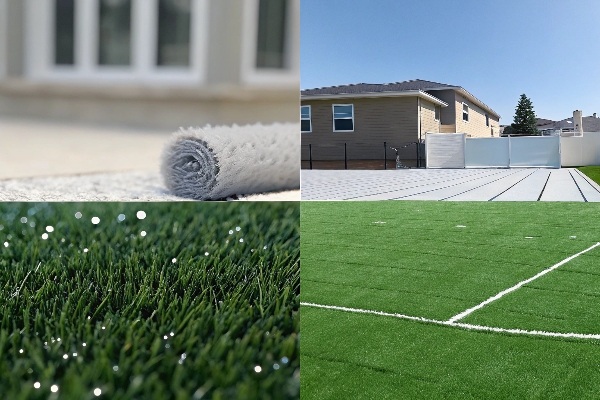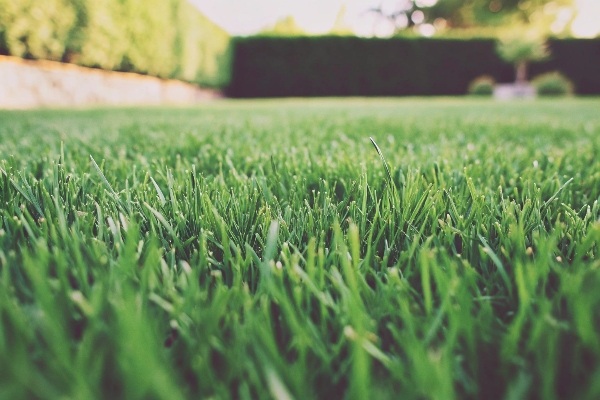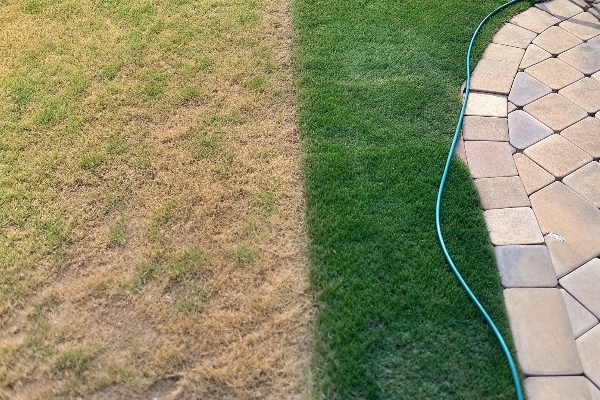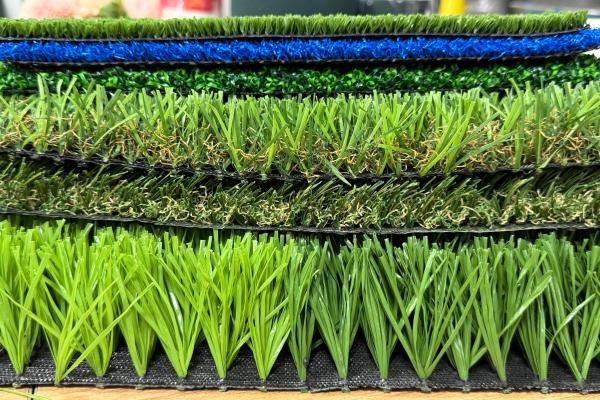Confused by all the names for grass, turf, and lawns? This confusion can make it hard to order what you need. It can lead to costly mistakes on your projects.
"Grass" is the natural plant. A "lawn" is an area of mown grass. "Turf" can mean either natural grass with its soil or artificial grass. "AstroTurf" is a specific brand of artificial turf, but many people use the name for all fake grass.

I’ve been an engineer in the artificial grass industry for a long time. I have seen how mixing up these terms can cause big problems for projects. A client might ask for "turf" but mean something completely different than what the supplier thinks. This simple mistake can lead to wrong orders, delayed projects, and lost money. Let’s look at each term closely. This will help you speak with confidence and make sure you always get the right product for your job.
Is a lawn the same as grass?
You think "lawn" and "grass" are identical? Using them wrongly might confuse landscapers or suppliers. Let’s get this simple distinction right to ensure clear project communication for everyone involved.
No, they are different. "Grass" is the plant itself. A "lawn" is a specific area of land, usually around a house or in a park, that is covered with mown grass. So, a lawn is made of grass.

I like to explain it this way: grass is the ingredient, and the lawn is the finished meal. You use grass plants to create a lawn. This simple idea is important when we talk about artificial products too. Customers want to buy an "artificial lawn." We create that artificial lawn by installing "artificial grass." Understanding this helps you communicate your vision clearly. When you talk to a supplier like me, knowing the difference helps us find the exact product you need to create the perfect look for your project. The details of the artificial grass you choose will determine the final look of the artificial lawn.
Grass: The Plant
Grass is a living plant. There are thousands of types, like Fescue1, Bermuda2, or Ryegrass3. Each type has different needs for sunlight, water, and soil. When we talk about "grass," we are talking about these individual plants.
Lawn: The Area
A lawn is a managed area of land covered in grass. It’s the green space in a backyard or the neatly kept ground in a park. It requires regular mowing, watering, and care to look good. The goal of a lawn is to create a uniform, beautiful surface.
Creating Your Perfect "Artificial Lawn"
With artificial products, you choose the "grass" to create the perfect "lawn." Your choice of artificial grass affects the final result. A higher pile height might feel softer, while a denser product will be more durable for heavy traffic. The color and blade shape also change the look.
| Concept | Natural | Artificial |
|---|---|---|
| The "Plant" | Grass (e.g., Fescue, Bermuda) | Artificial Grass Product |
| The "Area" | Lawn / Yard | Artificial Lawn Installation |
| Desired Look | Achieved by mowing, watering | Achieved by product choice (pile height, density) |
Are artificial grass and turf the same thing?
Are you ordering "turf" and expecting artificial grass? This mix-up can lead to getting the wrong product. It can delay your project and cost you money. This is a very common point of confusion.
Not always. "Turf" can mean natural grass with its soil attached, sold in rolls (often called sod). But today, especially in sports, "turf" very commonly means artificial grass. The context of your conversation is key to knowing which one is being discussed.

In my experience, this is the most important distinction for buyers to understand. I’ve had conversations where a customer kept asking for our "turf" prices. I had to ask specific questions to find out if he was talking about our synthetic products or if he was comparing them to natural grass sod from another supplier. In the artificial grass business, we use "artificial turf" and "artificial grass" to mean the same thing. But someone outside the industry might just say "turf." Always clarify. Asking a simple question like, "Are you talking about a natural grass product or a synthetic one?" can save you a lot of trouble.
The Traditional Meaning of Turf
Traditionally, "turf" refers to what is also known as sod. This is a layer of soil with grass growing on it. It is cut into strips or rolls and laid down to create an instant lawn. So, in a gardening or landscaping context, "turf" is a natural product.
The Modern Meaning of Turf
The meaning has changed over time. The rise of sports fields using synthetic surfaces led to a new use for the word. Now, people call football fields "the turf" even when they are 100% artificial. In the sports industry and for many consumers, "turf" now means artificial grass.
Why Context Matters for Your Business
As a business owner, you must be precise. When you get a project request for "turf installation," you need to know exactly what the client wants. The materials, installation process, and costs are completely different.
| Feature | Natural Turf (Sod) | Artificial Turf (Synthetic) |
|---|---|---|
| Composition | Real grass and soil | Synthetic fibers (PE, PP), backing, infill |
| Maintenance | High (mowing, watering) | Low (brushing, cleaning) |
| Durability | Wears out with heavy use | Very high, for heavy traffic |
| Use Case | Home lawns, general landscaping | Sports fields, commercial spaces, playgrounds |
What do you call fake grass?
Do you call all fake grass "AstroTurf"? This could limit your options and your understanding of the market. You need to know the right terms to find the perfect product for your projects.
The most professional term is "artificial grass" or "synthetic turf." While "fake grass" is common, and "AstroTurf" is a famous brand, using "artificial grass" shows suppliers you have a clear understanding of the product you are seeking.

Think about it like this: not all tissues are Kleenex, and not all sodas are Coke. Kleenex and Coke are brand names that became so popular people used them for the whole category. The same thing happened with AstroTurf. It was one of the first and most famous brands of artificial grass. So, for many years, people called all artificial grass "AstroTurf." As a business owner sourcing products, using the right words is a sign of professionalism. When you talk to me about "artificial grass" specifications, I know you are serious and informed. This helps us communicate better and get straight to the details that matter for your business, like pile height, density, and backing material.
The Story of AstroTurf
AstroTurf was the brand name of an artificial grass product developed in the 1960s. It was famously installed in the Houston Astrodome, which is how it got its name. It was revolutionary for its time, but early versions were very different from the soft, realistic products we manufacture today. It was more like a short, stiff carpet.
Common Names vs. Professional Terms
In casual chat, calling it "fake grass" is fine. Everyone knows what you mean. But in a business setting, it’s better to be more specific. Using a term like "fake grass" might suggest you are not familiar with the product. Using a brand name like "AstroTurf" could cause confusion if you actually want a product from a different manufacturer, like my company, QH Grass.
How Using the Right Term Helps You
Using professional terms makes you a better buyer. It gives you more control in the conversation. When you request a quote for "artificial grass" instead of "fake grass," suppliers will treat you with a higher level of respect. It helps ensure there are no misunderstandings about what you want to purchase.
| Term | Meaning | Best Use |
|---|---|---|
| Fake Grass | Casual, general term | Everyday conversation |
| AstroTurf | A specific brand of artificial turf | When referring to that brand only |
| Artificial Grass | Professional and accurate term | Communicating with suppliers, project specs |
| Synthetic Turf | Professional and accurate term | Technical documents, industry discussions |
Conclusion
Grass is natural, a lawn is an area of it. Turf can be natural or artificial. AstroTurf is a brand. Knowing these differences helps you buy smarter and communicate more clearly.
_画板-1.png)
_画板-1.png)